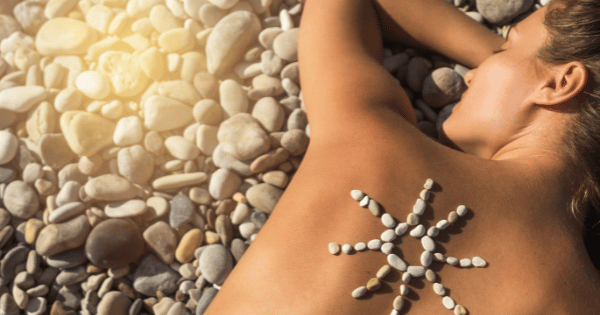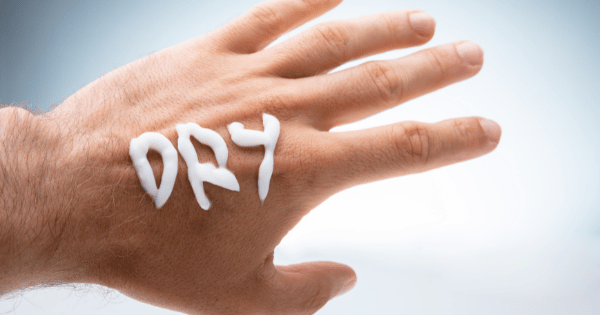Dry Skin

Dry skin, although it can appear flawless and smooth in youth, has its unique challenges. Characterized by a thin and sensitive horny layer and a lack of sebum, it tends to be more susceptible to aging, losing hydration and natural collagen more quickly compared to other skin types. However, understanding the causes of dry skin and how to effectively counter its weak points can help maintain its natural beauty over time. In this blog, we will explore these themes together to help you take the best care of your dry skin.
Dehydrated skin
Dehydrated skin is often mistakenly confused with dry skin. This is a skin condition that occurs when the skin lacks enough water content, and even oily skin can be dehydrated. This can be caused by a number of external factors such as climate, diet, or improper skin care (using overly aggressive cleansers or low-quality cosmetics).
Here are some signs of dehydrated skin:
- Tightness or signs: Those with dehydrated skin often experience an uncomfortable feeling of tightness, especially after cleansing.
- Dullness: Dehydrated skin may appear dull or lackluster, as it is not able to reflect light correctly.
- Fine lines: Dehydrated skin may present fine lines, especially around the eyes and mouth.
- Roughness: Dehydrated skin can feel rough to the touch and, in severe cases, may even flake or peel.
- Itching or burning: Those with dehydrated skin may experience itching or burning, especially when using hot water for cleansing or aggressive skin care products.
If you think you have dehydrated skin, it is important to focus on hydrating the skin from the inside, drinking plenty of water and using moisturizing products during your daily beauty routine, such as hyaluronic acid and glycerin.
Difference between dehydrated skin and dry skin
Dry skin and dehydrated skin are often considered the same thing, but they are two different conditions. Dry skin is a skin type characterized by a lack of oil production, while dehydrated skin is a skin condition characterized by a lack of water in the skin. Here are some ways to distinguish the two conditions:
- Appearance: Dry skin may appear flaky, scaly, or rough, while dehydrated skin may appear dull, and with more or less thin wrinkles.
- Texture: Dry skin may feel rough to the touch, while dehydrated skin can appear dull and marked.
- Sebum production: Dry skin is typically low in oil production, while dehydrated skin can produce sebum but lacks water.
- Causes: Dry skin is often caused by genetics, while dehydration is often caused by external factors such as climate, sunlight, diet, or the use of cosmetics that are not sufficiently moisturizing.
If you are still unsure whether you have dry or dehydrated skin, it is always a good idea to consult a skin care professional or dermatological consultant who can help define your skin type and recommend a personalized beauty routine.”
Causes of Dry Skin
Dry skin is characterized by a thin horny layer, which is the outermost layer of the skin that acts as a protective barrier. This thin layer makes the skin more prone to losing moisture and becoming dehydrated, resulting in premature aging.
Dry skin is also characterized by the lack of sebum, the natural fat produced by the skin. Sebum helps to create a waterproof layer on the skin that helps to retain moisture and prevent dehydration. Without a sufficient amount of sebum, the skin is more likely to lose hydration and moisture, which can make it appear dull, flaky, and dry.
In addition to the lack of sebum, dry skin can also be caused by a lack of hydration. When the skin is not properly hydrated, it can become dry and flaky and fine lines and wrinkles can become more noticeable.
Dry skin: Causes, symptoms and treatments

Dry skin is a common condition that affects millions of people worldwide. It occurs when the skin loses moisture or its natural oils are reduced, becoming rough, scaly and sometimes itchy.
Some evidence suggests that dry skin may have a genetic component. Certain genes can influence the way the skin produces and retains moisture, making some people more prone to dry skin than others.
For example, mutations in the filaggrin gene have been linked to an increased risk of dry skin and other skin conditions such as eczema. Filaggrin is a protein that helps form the skin’s natural barrier, which keeps moisture in and harmful substances out. When filaggrin is not produced properly, the skin can be more prone to dryness and irritation.
Other genes that may be involved in skin dryness are those that regulate the production of fat, or sebum, in the skin. People who have variations in these genes may produce less sebum, which can lead to dryness.
However, it is important to note that genetics is only one of many factors, such as diet and hormones, that can contribute to dry skin. Environmental factors such as climate, exposure to harsh chemicals or soaps and lifestyle habits such as smoking or drinking alcohol can also play a role.
Dry skin can jeopardise the structure of our natural collagen
In dry skin, the dermis’ natural collagen can be damaged, more easily than in other skin types, due to the lack of sebum and moisture in the skin. Collagen is an essential protein that gives elasticity and firmness to the skin. It is found in the dermis, the middle layer of the skin.
When the skin is dry, the lack of sebum and moisture can cause collagen fibres to break down more easily. This can lead to a loss of elasticity and firmness of the skin, resulting in fine lines and wrinkles.
To prevent collagen damage and premature ageing, it is important to keep the skin hydrated and protected. The use of a moisturising cream specifically formulated for dry skin can help restore hydration and prevent dehydration. It is also important to protect the skin from environmental factors that can cause damage, such as UV radiation and harsh chemicals. A healthy diet rich in foods such as green leafy vegetables and lean proteins can also help support collagen production and promote healthy skin.
Diet and dry skin
Nutrition can also affect skin health. A diet deficient in essential fatty acids, such as omega-3 and omega-6, can contribute to skin dryness. These fatty acids are important for maintaining the skin’s barrier function and retaining moisture. A diet rich in these fatty acids and vitamins A, C and E can help improve skin hydration.
In addition, excessive consumption of caffeine or alcohol can dehydrate the body and lead to dry skin. A balanced diet that includes fruit, vegetables and healthy fats can help maintain skin hydration.
Omega-3 fatty acids are essential fats that the body cannot produce, so it is necessary to obtain them through the diet. There are several food sources of omega-3 fatty acids, including:
- Oily fish: Salmon, tuna, mackerel, sardines and herring are rich in omega-3 fatty acids.
- Nuts and seeds: Flaxseeds, chia seeds and walnuts are good sources of omega-3.
- Vegetable oils: Linseed, canola, soya and olive oils are rich in omega-3 fatty acids.
- Supplements: To increase your omega-3 intake, you can also take omega-3 supplements such as fish oil or krill oil.
It is important to note that although omega-3 is beneficial for the body, excessive consumption can have negative effects. It is recommended not to consume more than 3 grams of omega-3 per day unless under the supervision of a doctor.
Hormones and dry skin
Hormones play an important role in maintaining the health and hydration of the skin. Changes in hormone levels can cause a number of skin problems, including dryness. Here are some of the hormonal causes that can promote dry skin:
- Menopause: Menopause is a natural biological process that marks the end of a woman’s reproductive age. During this period, the body’s oestrogen levels decrease, which can lead to reduced sebum production and dry skin →.
- Hypothyroidism: Hypothyroidism is a condition in which the thyroid gland does not produce enough thyroid hormone. This can lead to a range of symptoms, including dry skin, hair loss and brittle nails→.
- Diabetes: Diabetes is a condition in which the body is unable to regulate blood sugar levels properly. High blood sugar levels can damage blood vessels and nerves, resulting in reduced blood flow and nerve function in the skin. This can cause dryness, itching and other skin problems →.
- Pregnancy: hormonal changes during pregnancy can also affect skin moisture levels. Some women experience skin dryness during pregnancy, especially in the last stages →.
In general, hormonal imbalances can have a significant impact on skin health and hydration. If your skin is dry and you think hormones may be the cause, it is important to talk to a health professional about diagnosis and treatment options.
External factors contributing to skin dryness
Other factors that may contribute to skin dryness are exposure to harsh chemicals or soaps, environmental factors such as low humidity, cold, sun exposure and lifestyle habits such as smoking or excessive alcohol consumption.
Harsh soaps, detergents and some chemicals can strip the skin of its natural oils and cause dryness.
There are several chemicals and soaps that can worsen skin dryness, such as:
- Sulphates: Sulphates are commonly found in many soaps, shampoos and body washes. They are effective in removing dirt and oil from the skin, but can also eliminate the skin’s natural oils, leaving it dry and irritated.
- Fragrances: Synthetic fragrances in soaps and other skin care products can be an irritant to the skin, causing dryness and other skin problems.
- Alcohol: Many skin care products, including toners and astringents, contain alcohol, which can be very drying to the skin.
- Harsh exfoliants: Excessive use of harsh exfoliants can damage the skin’s natural protective barrier, causing dryness and irritation.
- It is important to choose products that are gentle, non-irritating and formulated for dry skin.
- Cold, dry air can rob the skin of moisture, causing dryness and cracking.
- Cold, dry air can have a significant impact on the skin’s moisture levels, particularly in low-humidity areas or during the winter months. Cold air has a lower moisture-holding capacity than warm air, which can lead to water evaporation from the surface of the skin.
- In addition, cold air can cause constriction of the skin’s blood vessels, reducing blood flow and nutrient supply to the skin.
These factors can combine and cause dryness, flaking and, in some cases, even cracking of the skin.
Using a humidifier, regularly applying a moisturiser or marine collagen to protect the skin and avoiding prolonged exposure to cold, dry air can help mitigate these effects and maintain healthy moisture levels in the skin.
Sun exposure and dry skin

Sun exposure can also contribute to skin dryness. Prolonged exposure to the sun’s ultraviolet (UV) rays can damage the skin’s natural barrier, resulting in loss of moisture and dryness. In addition, frequent sunburn can lead to desquamation of the skin and can worsen dryness.
Excessive exposure to the sun can damage the dermis’ natural collagen fibres, resulting in premature ageing and dryness of the skin. The sun’s UV rays can cause collagen breakdown, resulting in a loss of elasticity and firmness of the skin. This can lead to the appearance of fine lines, wrinkles and dryness.
Sun damage can also lead to uneven pigmentation and dark spots on the skin. It is important to protect the skin from the harmful effects of the sun by using a sunscreen with SPF and wearing protective clothing, such as hats and long-sleeved shirts during peak hours.
Hot showers and baths
Hot showers and baths can be harmful to the skin, especially if prolonged or frequent. Hot water can strip the skin of its natural oils, which act as a barrier to retain moisture. This can lead to dryness, flaking and irritation.
It is recommended to take short showers and baths and to use lukewarm rather than hot water. In addition, using a mild cleanser and applying a moisturising cream immediately after bathing can help replenish the skin’s natural oils and prevent dryness.
Some pathologies can cause dry skin
Health conditions can have a significant impact on the skin, and cause dryness. Eczema and psoriasis are both skin conditions that can lead to dry, itchy, inflamed skin. Hypothyroidism, a condition in which the thyroid gland does not produce enough hormones, can also cause dry skin.
In addition, other conditions that can affect skin hydration include diabetes, kidney disease and even certain medications. It is important to consult a doctor if dry skin persists or if you suspect that the cause may be a medical condition.
Dry skin signs
The signs of dry skin can vary depending on the severity of the condition. Some common signs are:
- Rough, scaly or flaky skin
- Itching or irritation
- Tiredness or discomfort
- Cracks or fissures in the skin
- Redness or inflammation
Dry skin treatments
Fortunately, there are several treatments that can help alleviate the symptoms of dry skin, including:
- Moisturisers: Applying a moisturiser can help maintain hydration and prevent the skin from drying out.
- Humidifiers: Adding moisture to the air with a humidifier can help prevent dryness, especially in the winter months.
- Avoid hot showers and baths: Taking shorter, cooler showers and baths can help prevent the skin from drying out.
- Gentle soaps and cleansers: Using mild, fragrance-free soaps and cleansers can help prevent irritation and dryness.
- Prescribed medication: In severe cases, the doctor may prescribe a medicated cream or ointment to treat dry skin.
In conclusion, dry skin is a common condition that can be caused by several factors. If you feel the signs of dry skin, it is important to take steps to prevent further dryness and irritation. By following the treatments described in this post and consulting a dermoconsultant and, in some cases, a doctor if necessary, you can keep your skin healthy, hydrated and comfortable.
Dry facial skin
Dry facial skin is not the same as dehydrated skin. While dehydrated skin lacks water, dry skin is a type of skin that lacks sebum, the skin’s natural oil produced by the sebaceous glands.
Sebum plays a key role in maintaining the health of the skin, keeping it hydrated and protecting it from external factors such as pollution, harsh weather and irritants. When the skin lacks sebum, it can become dry, rough and flaky. This is because the skin’s natural moisture barrier is compromised, making it more susceptible to damage and inflammation.
Factors such as genetics, ageing and environmental factors can contribute to the development of dry skin. People with dry skin can benefit from using moisturising creams that contain ingredients such as ceramides, hyaluronic acid and glycerine that help restore and maintain the skin’s moisture barrier. In addition, avoiding harsh soaps, using lukewarm water to wash the face and avoiding excessive sun exposure can help improve dry skin.
Face cream for dry skin
When choosing a face cream for dry skin, it is important to look for products formulated to provide moisture and nourishment to the skin. Here are some key ingredients to look for in a face cream for dry skin:
- Hyaluronic acid: This ingredient can contain up to 1000 times its weight in water, making it an excellent moisturiser for dry skin.
- Ceramides: These lipids help strengthen the skin’s natural moisture barrier, preventing moisture loss and keeping the skin hydrated.
- Glycerine: This humectant draws moisture into the skin, helping to keep it hydrated and plumped up.
- Shea butter: This natural ingredient is rich in fatty acids and vitamins that help nourish and moisturise the skin.
- Aloe vera: This plant extract has soothing properties that can help calm dry and irritated skin.
- Marine collagen: This omega-3-rich ingredient protects, moisturises and has an anti-inflammatory function.
When choosing a face cream, look for products that contain one or more of these ingredients. Also consider the consistency of the cream: fuller creams are often more moisturising than lighter lotions. Also, it is important to avoid products that contain harsh ingredients such as alcohol and perfumes, which can further dry out the skin.
How to improve the effectiveness of your face cream for dry skin?
Dermo-active drops are specialised skin care products created to provide the skin with nourishment and hydration. These drops are formulated with highly concentrated active ingredients, such as vitamins, antioxidants, hyaluronic or glycolic acid or marine collagen, that can penetrate deep into the skin to provide intense hydration and nourishment.
When used together with a face cream, dermoactive drops can help boost the moisturising and nourishing effects of the cream. The drops can be applied directly to the skin after cleansing and toning, before applying the face cream. They can also be used alone as a single skin care product.
It is important to choose dermo-active drops specifically formulated for your skin type and problems. For example, if you have dry skin, look for drops formulated to provide deep hydration and nourishment to your skin. If your skin is ageing, look for drops that contain anti-ageing ingredients such as glycolic acid, hyaluronic acid or marine collagen.
Overall, dermoactive drops can be a great addition to your daily skin beauty routine, helping to provide targeted hydration and nourishment. However, as with any new skin care product, it is important to test the drops first and talk to a dermoconsultant or skin care professional if you have any doubts or questions.
La secchezza delle mani può essere causata da diversi fattori:

- Weather: exposure to cold, dry air can cause dry and cracked skin on the hands.
- Hand washing: Frequent hand washing or the use of disinfectants can strip the skin of its natural oils, causing dryness.
- Harsh soaps and detergents: The use of harsh soaps and detergents to clean hands can also deprive the skin of its natural oils and cause dryness.
- Pathologies : Certain diseases , such as eczema, psoriasis and thyroid disorders, can also cause dry and itchy hands.
- Age: With advancing age, the skin becomes thinner and less able to retain moisture, which can lead to dryness.
- Occupational factors: People in occupations that require frequent hand washing or exposure to chemicals, such as healthcare workers or hairdressers, may be more prone to developing dry, cracked skin on their hands.
To prevent and alleviate dry skin on the hands, it is important to moisturise them regularly with a thick, emollient cream or ointment.
Marine collagen can be a useful solution for dry skin on the hands, especially during winter, when cold, dry weather can make the problem worse. Collagen is a protein found in the skin and helps provide structure and elasticity. Marine collagen is a type of collagen that comes from fish and has been shown to have moisturising and anti-ageing effects on the skin.
Used on the hands, marine collagen can help improve skin moisture levels and reduce the appearance of dryness and cracking. It can also help improve the overall texture and elasticity of the skin, making it smoother and more elastic.
It is important to use marine collagen on your hands. Choose a hand cream or hand lotion that contains marine collagen as one of its active ingredients or hand drops that can be absorbed better and will not make your hands too oily.
Apply the cream or lotion to the hands as needed throughout the day, paying particular attention to the driest and most chapped areas of the hands. Be sure to massage the cream or lotion thoroughly into the skin to aid absorption.
It is also important to avoid using hot water when washing your hands and to dry them gently with a soft towel. In addition, wearing gloves when doing housework or working with chemicals can help protect the skin on your hands from further damage.
If you are struggling with dry skin on your face, body, legs or hands, there are several ways to take action. You can try the tips and advice described in this blog or seek advice from a dermatologist or skin care specialist.
Schedule a free consultation with a dermoconsultant at a pharmacy near you, who can give you personalised advice on products and techniques to improve the hydration and general health of your skin. In addition, you can try the recommended products and receive a free dermo-oxygenating massage to check their effectiveness.
Sources
American Academy of Dermatology asociation : https://www.aad.org/public/diseases/dry-sweaty-skin/dry-skin
Mayo Clinic – https://www.mayoclinic.org/diseases-conditions/dry-skin/symptoms-causes/syc-20353885
DermNet NZ – https://dermnetnz.org/topics/dry-skin/
Healthline – https://www.healthline.com/health/dry-skin
Harvard Medical School – https://www.health.harvard.edu/womens-health/dealing-with-the-symptoms-of-menopause
American Academy of Dermatology asociation – https://www.aad.org/public/diseases/a-z/thyroid-disease-skin-changes
American Academy of Dermatology asociation – https://www.aad.org/public/diseases/a-z/diabetes-warning-signs
